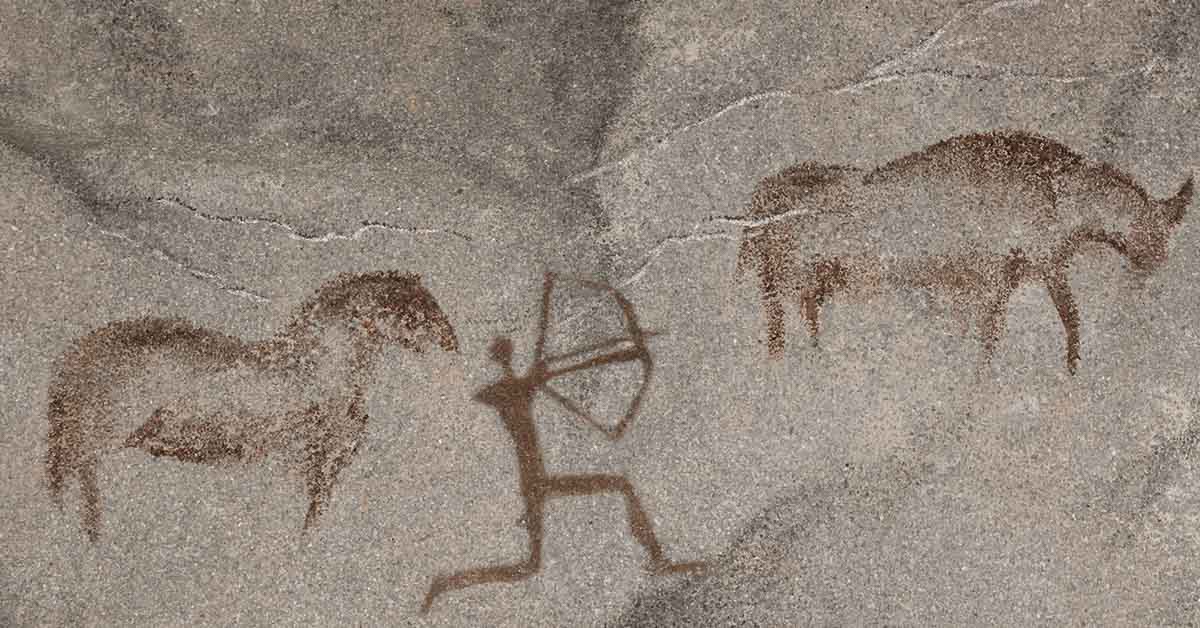For generations, the story of our human ancestry has often been told in the context of the Out of Africa theory, a narrative positing that modern Homo Sapiens evolved in Africa and subsequently migrated across the globe.1 However, recent discoveries and scientific advancements have significantly complicated this narrative, providing a more nuanced understanding of the early migratory paths of our species.
Unveiling the Complexity of Early Migration
The few hypotheses challenging the traditional human origin “Out of Africa” theory are that Homo Erectus could have left Africa much earlier and spread out across Asia, Oceania, and Europe to either perish on their own and start in Africa again or that each continent had their own evolutionary growths to the eventual Homo Sapien stage we are all in now.2
Moreover, the genetic analysis of present-day human populations and ancient DNA samples has highlighted the existence of genetic diversity amongst the first groups of humans to leave Africa. Notably, some of these early migrants didn’t directly contribute to the genetic makeup of contemporary non-African populations.3 This complexity suggests that the traditional Out of Africa narrative is a simplification of a convoluted process, involving multiple waves of migration and regional extinctions.
Rewriting the Human Story
One of the most fascinating aspects of the revised understanding of human migration is the evidence of interbreeding between different hominin groups. Modern humans did not merely replace archaic hominins like the Neanderthals and Denisovans; they also could have interbred with them.3
Part of the shift in understanding human origins involves reevaluating the timeline of early human migrations. Until recently, consensus within the scientific community suggested that the primary migration out of Africa occurred approximately 150,000 years ago.
Evidence from archaeological sites in southern and eastern Asia, such as the cave of Fuyan in China, have presented human teeth that predate the 60,000-year timeline.4 These findings demonstrate that small groups of Homo sapiens managed to establish themselves in regions far from their African homeland, much earlier than traditionally assumed.
While these early pioneers may not have left a significant genetic mark on contemporary populations, their existence disrupts the previously accepted timeline of human migration. It suggests a scenario in which the spread of our species was not a singular event but a continuous process, marked by periods of migration, settlement, and possibly local extinction.
The Role of Climate Change in Human Origins and Dispersal
The complexity of early human migration isn’t just limited to the who and the when; the ‘why’ is equally intricate. It’s believed that climate change could have played a crucial role in these early movements.
Dramatic fluctuations in climate conditions may have created a changing landscape of habitable land that facilitated these early human migrations. These environmental changes, paired with the cognitive and technological advancements of early Homo sapiens, allowed our ancestors to adapt to new habitats and extend their range far beyond Africa.
Evidence of early human adaptation to diverse environments — from the harsh cold climates of Northern Siberia to the tropical regions of Southeast Asia — further illustrates our species’ remarkable resilience and versatility. It underscores the human ability to explore and adapt, a trait that has been a defining characteristic of our species.5
Our Ever-Evolving Understanding of Human Origins
These groundbreaking findings represent a significant shift in our understanding of human origins. They don’t necessarily negate the Out of Africa theory; instead, they add texture and depth to it, painting a picture of early human migration that is much richer and more complex than previously imagined.
Our understanding of the past, much like the human story itself, is continually evolving. As new discoveries come to light and technologies advance, our narrative is refined, and often, rewritten. The story of the first humans out of Africa, as it turns out, is far more intricate and fascinating than a simple journey from one point to another.
Through continued research and exploration, we are not only uncovering the paths our ancestors tread but also gaining invaluable insights into our nature as a species. The story of human origins continues to unfold, revealing a narrative of diversity, resilience, and interconnectedness that truly makes us human.
Implications for Understanding Human Origins
This new understanding of early human migration and interbreeding has profound implications for our understanding of human origins. Rather than a simple narrative of modern humans leaving Africa to populate the rest of the world, the story of our species is now seen as a complex tapestry of migrations, interactions, and interbreeding.
Furthermore, this revised understanding helps challenge notions of human racial purity and superiority. Human evolution has been a complex process, filled with interbreeding and adaptation to diverse environments. These findings emphasize that no race or group has a ‘pure’ lineage or is inherently superior or inferior.
Indeed, this understanding of early human migration has redefined what it means to be human. It has reshaped our perspectives on human diversity and underscored our interconnectedness. As we continue to unravel the intricate paths of our ancestry, the true complexity and beauty of human origins become increasingly apparent.
These are exciting times to delve into our past. As we peer deeper into the complex weave of our evolutionary history, it’s becoming clear that the first humans out of Africa weren’t quite whom we thought. Instead, they were far more complex, diverse, and fascinating than we could ever have imagined.
Keep Reading: Study finds plants ‘scream’ when stressed or injured, raising questions about communication
Sources
- “A new understanding of human origins in Africa.” McGill. May 17, 2023.
- “Out-of-Africa versus the multiregional hypothesis.” Nature
- “The First Humans Out of Africa Weren’t Quite Who We Thought.” Science Alert. Carly Cassella. May 19, 2023.
- “Discovery of 47 teeth in Chinese cave changes picture of human migration out of Africa.” LA Times. Amina Khan. October 14, 2015.
- “Climate Effects on Human Evolution.” Human Origins

